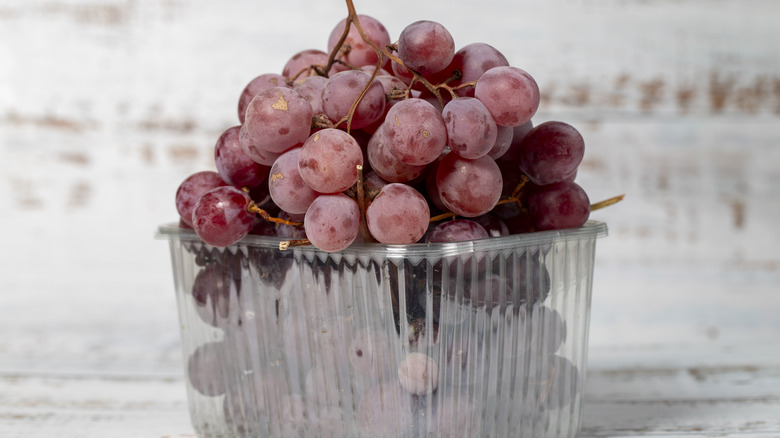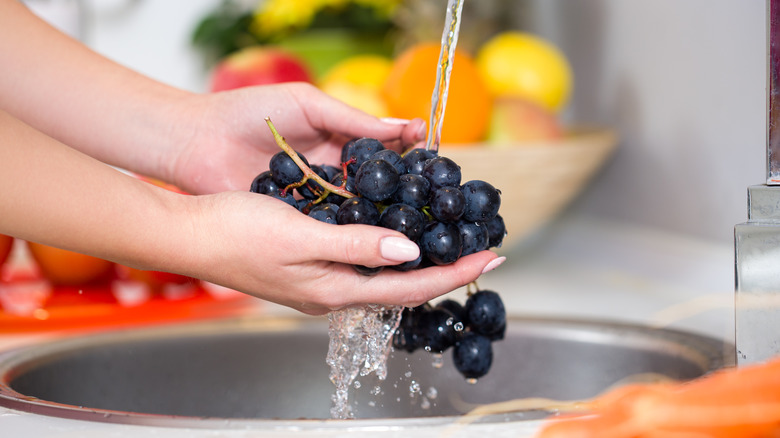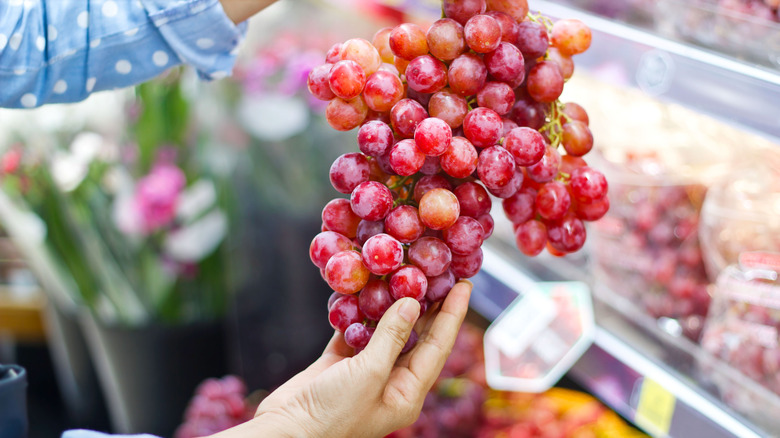The Container Matters When It Comes To Storing Grapes
For many of us, returning home from the store with a bag of grapes is promptly followed by washing the fruit and storing it away in an airtight container. While that might be a great move for keeping yogurt fresh in the fridge, this isn't actually the best method for keeping grapes at their prime.
Without proper airflow, a container of fruit can build up condensation, which in turn hastens spoilage. The potential for condensation is also why you shouldn't soak or wash your fruit prior to storage. To be clear, grapes do need some humidity to not dry out, but there should never be so much moisture that there is visible accumulation. Instead, keep grapes in the crisper drawer of your fridge, which has a controlled level of humidity.
Also for the best results, store your grapes in either the bag they came in with its sufficient air holes or some other kind of ventilated container, as these options allow for sufficient airflow. If kept dry, cool, and ventilated, grapes can last up to three weeks in the fridge before starting to get a little funky. The sole exception to the airtight-container rule is cut grapes, which will only last up to 48 hours anyway.
How to properly clean grapes
Like any other piece of produce, grapes should be thoroughly cleaned before consumption to remove any insects, dirt, mold, bacteria, or pesticides. Washing can also help remove any white-ish residue known as "bloom" from the grapes' skin. The bloom, composed of yeast, is completely safe to eat, but some people may be sensitive to its waxy texture.
As such, a simple rinse — which is sufficient for most produce — might not get the job done. Rather, you may need to take an extra step to properly clean grapes, but it's as easy as gently rubbing the fruit with salt and baking soda before you rinse the solution off. With the additional scrubbing power provided by the salt and baking soda, your grapes will be super clean and ready to eat.
Most importantly, you should only wash grapes right before you're going to eat them. Yes, this can hinder your plans for grab-and-go snacks, but it will also keep your grapes from spoiling sooner than expected. If you have to wash them prior to storage, dry them as best you can to limit excess moisture.
Picking out grapes - both the good and bad signs
Whether you're shopping for grapes at the store or picking through a package of grapes at home, it's helpful to know how to differentiate the good bunches from the bad, starting with the stem. Strong, green stems signal that the grapes are well-hydrated, while a brown and shriveled stem can point to grapes losing moisture.
Another feature to check for is the color of the grapes themselves, as well as their level of firmness. Their colors should be rich and vibrant, so avoid any with discoloration or signs of fading. Unlike certain other fruits, grapes do not continue to ripen after being harvested, so what you see is what you get. In terms of texture, a mushy or shriveled grape means spoilage is in progress, so if you find these at home, be sure to toss them right away.
Keep in mind that while it's socially acceptable to sample grapes at the grocery store, you should only do so as a last resort. This behavior removes product from the packages other customers will be paying for, and also subjects you to fruit potentially contaminated by any number of different substances.



